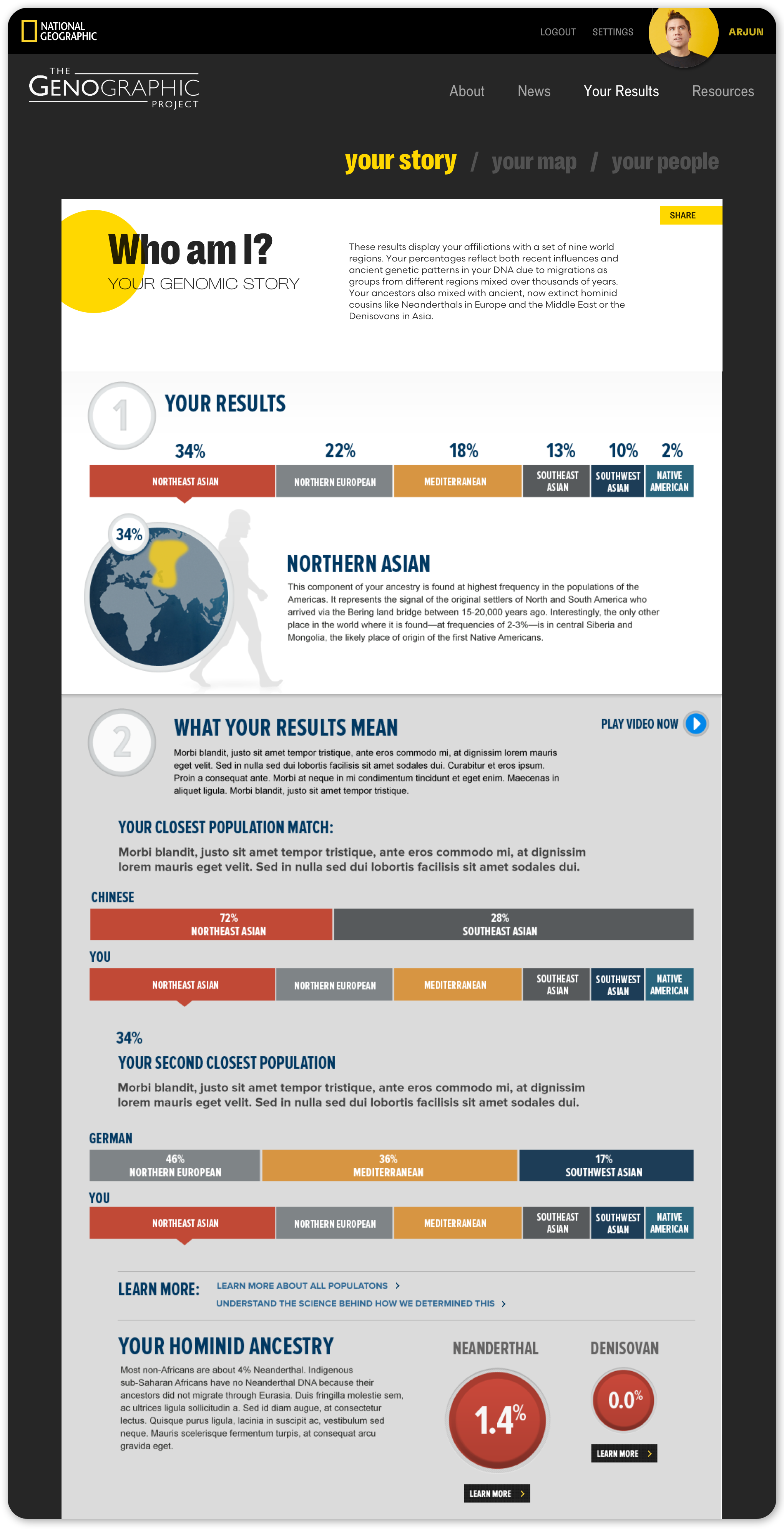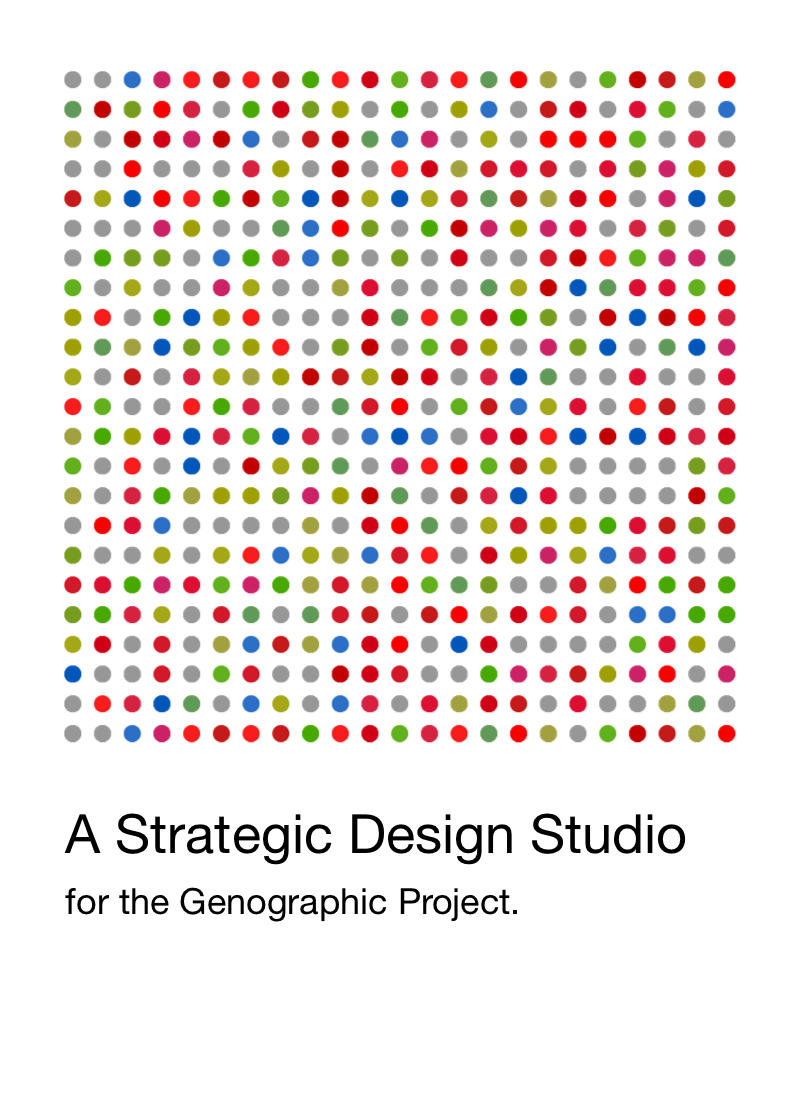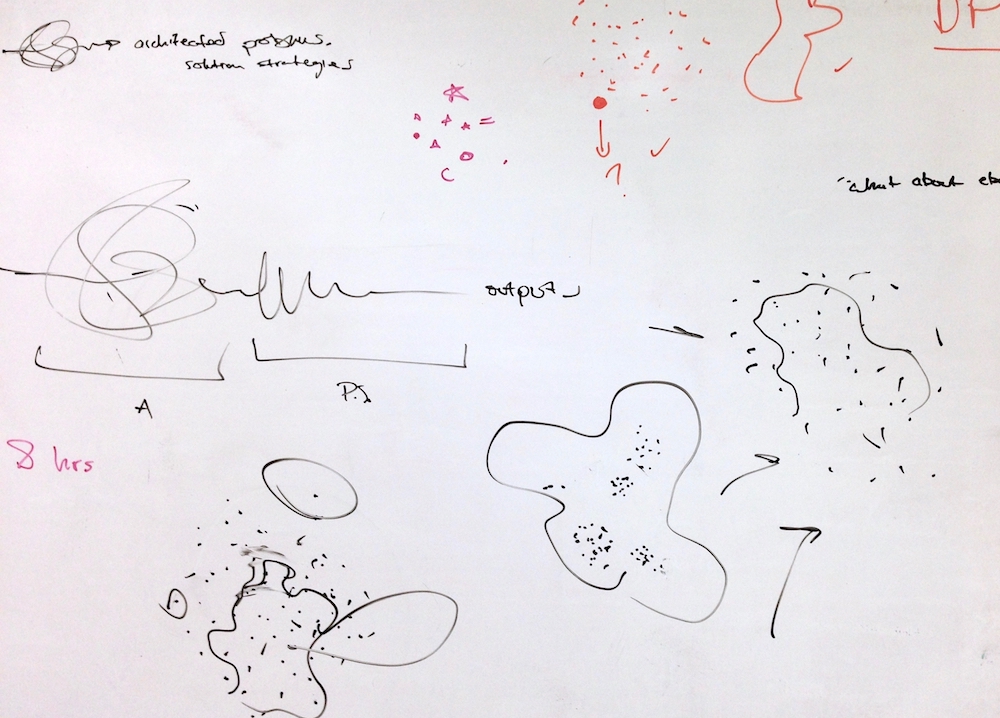Pruduct & UX Design
at National Geographic
Shaping the customer experience for the Genographic Project.
IN 2011 I began working with National Geographic to lead the experience design for the Genographic Project, a wildly successful initiative run by the renown scientist and author, Spencer Wells. After we launched the product, I led the design of new organizational strategies and structure to sustain a design-driven approach for future work on the Project.
The Genographic Project is both a revolutionary consumer product and a unprecedented citizen-scientist initiative. Customers buy a kit that allows them to send in a DNA sample for sequencing at our partner labs. A few weeks later, they get access to a rich, interactive digital storytelling experience about their personal ancient ancestry.
The science behind the Project is largely built on Spencer's research sampling DNA of indigenous populations across the globe. But when customers send in their samples they are also contributing to the science. Their DNA helps expand the Genographic Project database, and deepens the stories for every customer. In this way, customers are both consumers and contributors.


IN the beginning, my role was to lead the design for digital storytelling—to shape the experience for the individualized storytelling and other aspects of the product. This involved significant user research, prototyping, and user interface design. I also led the front- and back-end development for this phase. The final product was a major success, offering customers a rich individualized storytelling experience, making the science behind the project accessible, and connecting them to the other Project participants.
The success of this first phase gave us the institutional buy-in to adopt a design-driven approach for future work across the entire project. My role expanded to help establish organizational strategy and processes, and to incubate the team culture necessary to bring these changes to life. I educated managers and team members in intensive philosophy sessions and hands-on workshops. Together we prototyped methods and architected formal processes and protocols. We secured office spaces and turned them into studio spaces. We developed core principles, maintained a reading list, attended events and meet-ups, and more.
Today, the Genographic team continues using the approach we developed, and their success has empowered them to spread it to other National Geographic projects.





